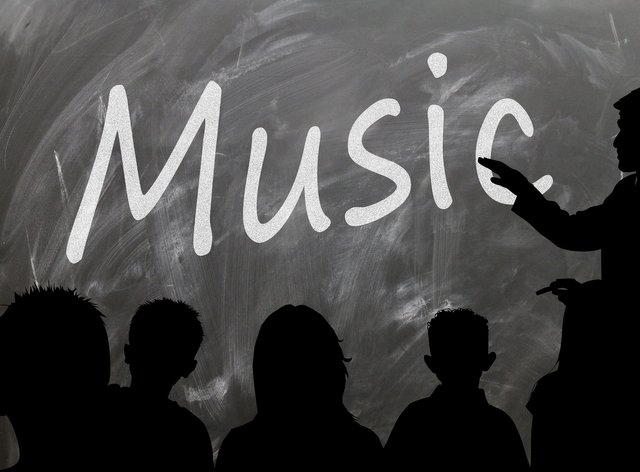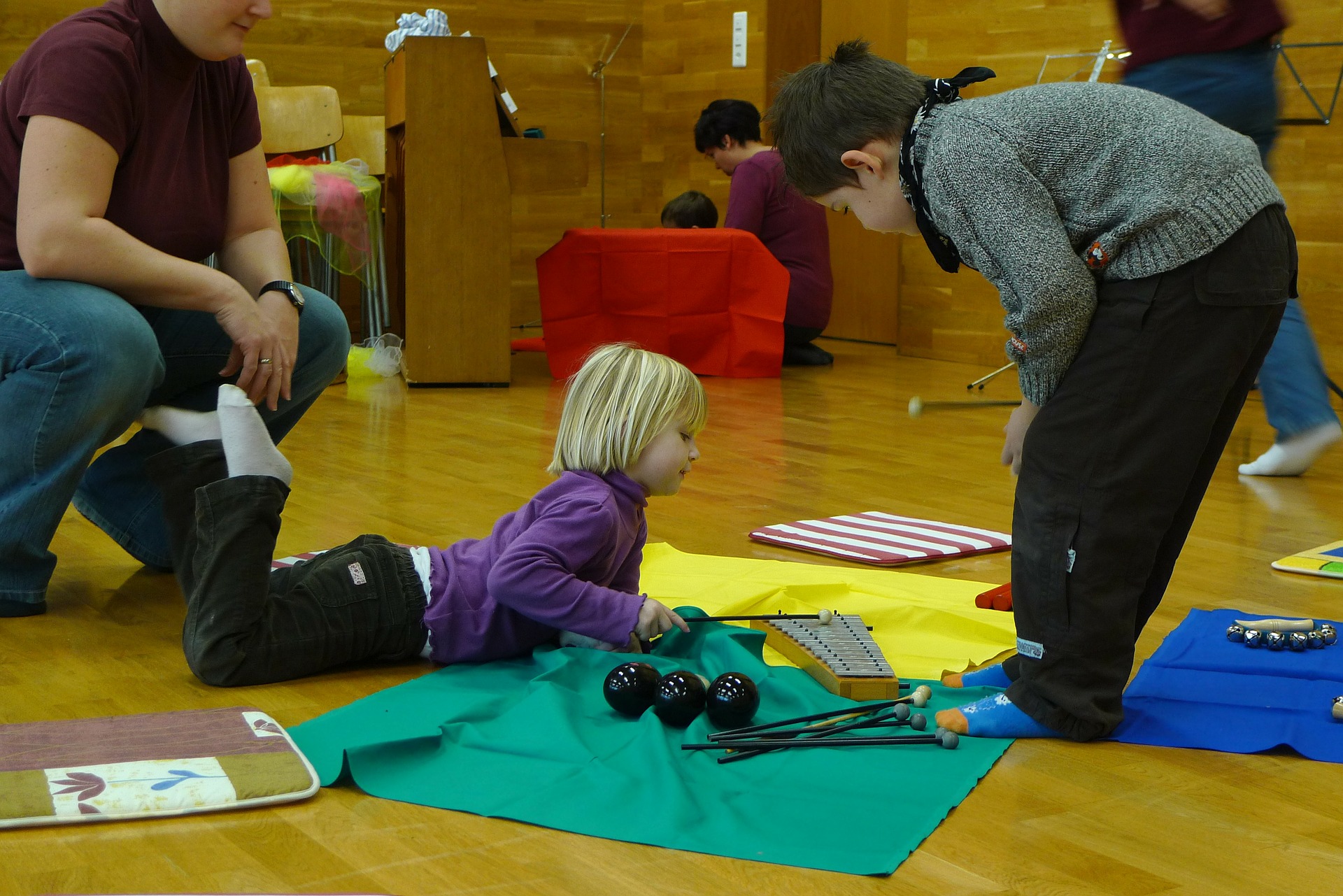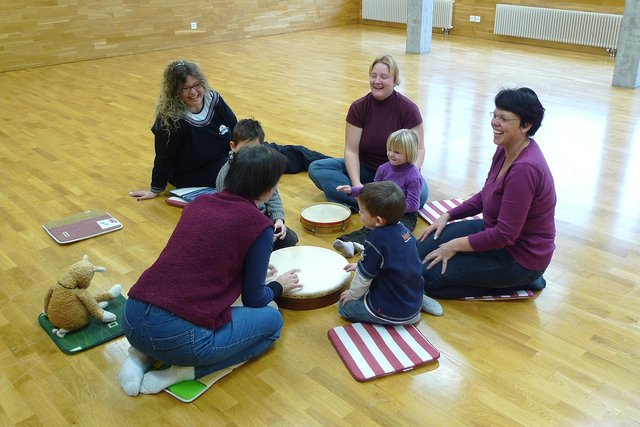
Listening to sounds is a part of our everyday life.
Where ever we go, and whatever we do, we hear sounds. The rush of traffic, the yelling of street merchants, the cry of a baby, the bark of a dog, a gasp, a groan, a sigh, sounds permeate our life in a day-to-day basis. For musicians, it carries an even greater importance since they live to create sounds in a deliberate pattern or manner. For a child, sound is something they enjoy and learn from, the reason that they learn to talk and pick up information about the world around them.
“Children thrive on music. It’s one of the best vehicles for learning in early childhood development. ”
(Source: “For a Child’s Brain, Body, Heart & Soul” Why Choose Kindermusik. http://www.kindermusik.com/about/why-kindermusik/)
That is the reason why there are music classes, to further enhance a child’s musical abilities and capabilities, not only to help them musically but also mentally through exercising their cognitive functions and developing it.
“Psychologists, neuroscientists, and experts in early childhood development have demonstrated that music does more for children than bring them joy; it helps their brain cells make the connections needed for virtually every kind of intelligence. ”
(Source: “For a Child’s Brain, Body, Heart & Soul” Why Choose Kindermusik. http://www.kindermusik.com/about/why-kindermusik/)
And while some understand the need for music education, they question the need for the children to take time to listen to music, which is part of the curriculum. They think is as time wasted when the children could be taught to read and write music.

Music is not music without the listening aspect of it. It’s like learning a new language through just reading, which is to say you can understand it but you really cannot be able to say speak it since you do not know how to do it. Just like a pen with no ink, a cellphone with no signal, or a book without words.
The listening to music is an integral part of the education in regards to it.
Listening helps children recognize the differences and nuances in music, training their mind to pick up on details, making them more aware and responsive to the sounds around them. It is not only helpful in training their musical skills but it also raises their abilities in different areas.
To be able to concentrate on and understand what one hears is an ability that is developed. While some can naturally master it with their mental capabilities, for others it takes time and effort, and music education develops this aspect through the music listening area of it.
“The ability to listen involves more than just hearing. It requires children to focus their minds on the sounds perceived. Haines and Gerber (2000) state, ‘This ability to pay attention is not innate but it is a learned skill, and the young child needs training and help to acquire it’. We urged parents and teachers to help young children become more sensitive to the sounds around them and to help them translate these sounds into meaningful experiences. These efforts should continue, since sound discrimination is vital to the musical development of the child. Unless someone has really made a point of helping a child sharpen his or her listening skills, the myriad sounds that must be confronted will often cause poor listening habits to be established prior to school. ”
(Source: L.C. Edwards, K.M. Bayless, M.E. Ramsey. “Listening to Music.” Education.com. http://www.education.com/reference/article/listening-music-children/)
Of course, some would say that you can just have the children listen to music at home, instead of wasting precious class time just listening to music. But of course, the question is will the child know what to listen for? What they needed is guided listening by someone who knows what to they need to hear, how to make the children understand what they are listening to, and how to do it in a way that will capture a youngster’s short attention span. This is something that a music educator is capable of and trained to do.
“ Individual singing plus listening to music (by means of active and passive well-arranged experiences) develops the ear to such an extent that one understands music one has heard with much clarity as though one were looking at a score; if necessary – and if time permits – one should be able to reproduce such a score.”
(Source: Kodaly, “Musical Reading,” p. 204)

It is time well spent when a child listens through a piece of music in a guided manner that will help him or her in the development of their hearing skills, through paying attention to music in a way that they can appreciate and enjoy. Especially in a class where they can discuss what they have learned with their peers, do activities concerning what they listened to, thus, making the listening experience even more memorable and fun.
Playing, which they would do in their activities, would let them remember what they learned with more clarity and would stick to their minds than just letting them listen.
“Early childhood is also the time when children learn about their world primarily through the magical process of play. The substance of play in very young children is usually comprised of the environmental objects and experiences to which they have been exposed. If the music environment is sufficiently rich, there will be a continuous and ever richer spiral of exposure to new musical elements followed by the child's playful experimentation with these elements. ”
(Source: Levinowitz, Lili M. “The Importance of Music in Early Childhood.” Musictogether.com. (1998). https://www.musictogether.com/about/research-and-development/researched-based-program/importance-of-music-in-early-childhood)
Ravel’s Bolero teaches children to be able to tell the differences in timbres of orchestral instruments. Listening to piano pieces by Mozart enables them to learn what a musical phrase is. Symphonies can teach them about texture, dynamics, tempo (fast, soft), steady beat, and more. Their sphere of experience is widened through exposure to a variety of music, teaching them not only about them about the music itself but also about the culture that gave birth to it.
(These are two pieces that are popular with music educators, they love letting kids listen to these. 'Peter and the Wolf' by Sergei Prokofiev, and the 'Mother Goose Suite' by Maurice Ravel.)
There is a reason why formal music theory is only taught in higher grades. Children from age three to eight, are taught more about music through actions, movements, rather than seat work. They internalize what they learn better when they are able to do it through movement. This is why Dalcroze, Kodaly, eurhythmics, and other music education methods incorporate the use of movements in their lessons.

Not only does listening to music help the child mentally, but also emotionally. They can listen to the music and hear things that the composer wants to convey. It helps them understand what cannot be put into words and be more sensitive and appreciative of those around them, teaching them the art of communication, also letting them grow in character.
Music is a language, which is to say that we need to listen to it to understand it, not limiting it to the adults but also sharing it with children.
All photos in the post are from Pixabay.
The videos are from Youtube and belong to their respective owners.
Very nice article! I've tried teaching children music (instruments, and listening to music) before, and it's not easy to make the content both easily digestible and interesting to kids with short attention span.
My opinion is that it depends on how young the child is, and that there needs to be a certain amount of musical exposure before it's worthwhile to have music listening lessons. What do you think?
Downvoting a post can decrease pending rewards and make it less visible. Common reasons:
Submit
In regards to this, kids, especially the 5-7 age, have really short attention spans. For them, when you do music listening lessons, they're supposed to be accompanied by fun activities to capture their attention.
Prior musical exposure does help before music listening lessons. It prepares them so that they know what to watch out for, etc.
If I remember what my elementary methods teacher said correctly, it's about not giving kids long pieces of music to listen to, just short ones that have the theory you want them to learn. For example, when you're teaching steady beat, you'd give them a short marching-type of piece to listen to and have them march along.
Downvoting a post can decrease pending rewards and make it less visible. Common reasons:
Submit
Great article! Sorry that I didn't see it before, but I'm only really checking the #classical-music tag....
I would have to say that the learning to listen to music (and just generally listening!) is a undervalued skill. It really does teach many things that are impossible to put into words.
EDIT, upvote is hanging. I will try again later.
Please let any classical musicians or classical music lovers that you know to subscribe to @classical-music and @classical-radio, and to start using the #classical-music hashtag, so we can try and grow our community! Join us at our Dishord: https://discord.gg/ppVmmgt
Downvoting a post can decrease pending rewards and make it less visible. Common reasons:
Submit
Thanks, glad you liked it :) And yep, when we had our music education classes, we studied about the importance of listening and how its development can help in a kid's learning process. Sometimes teachers concentrate too much on making kids understand musical concepts that they forget about letting the kids experience the music through listening.
Downvoting a post can decrease pending rewards and make it less visible. Common reasons:
Submit